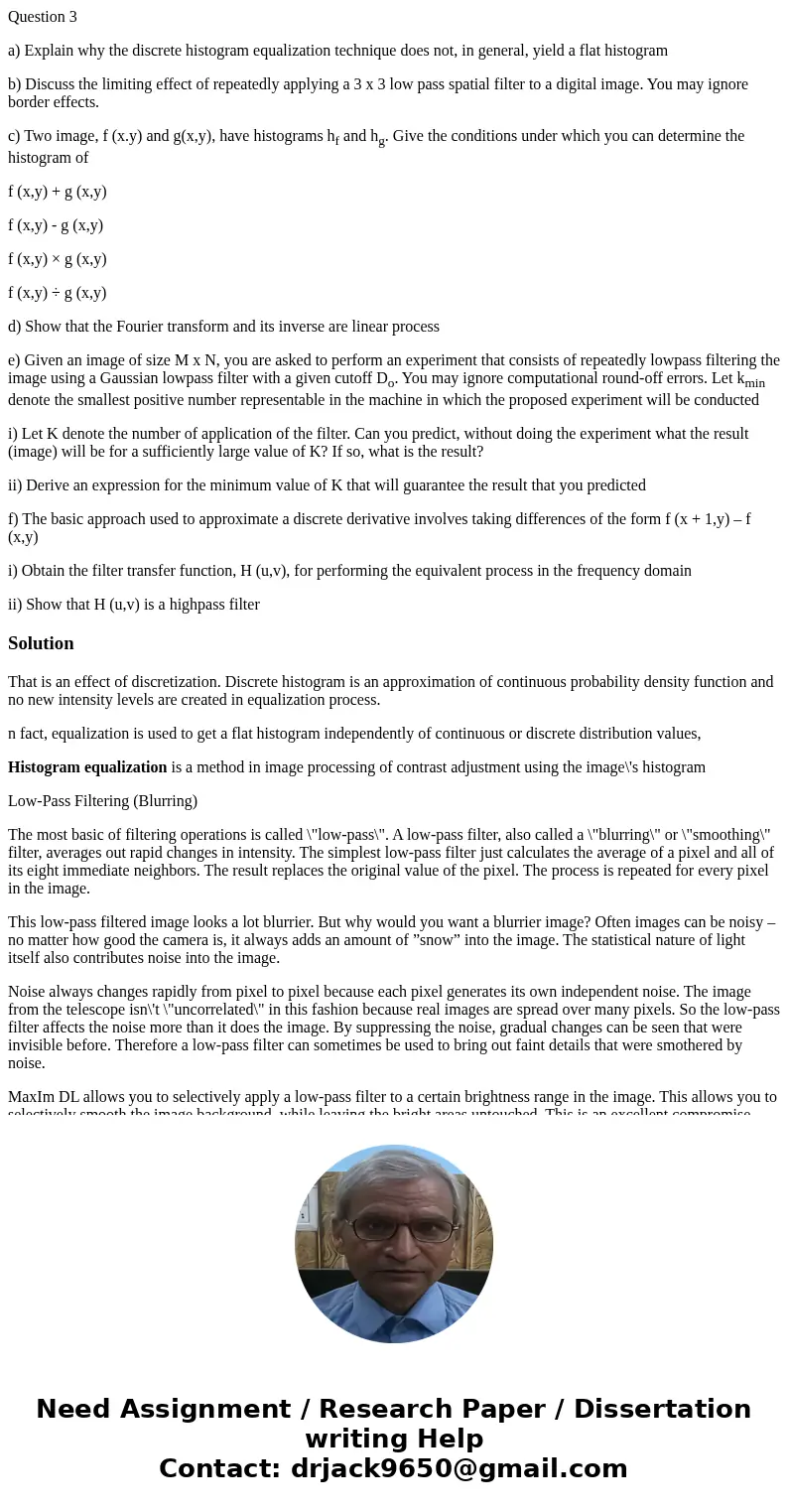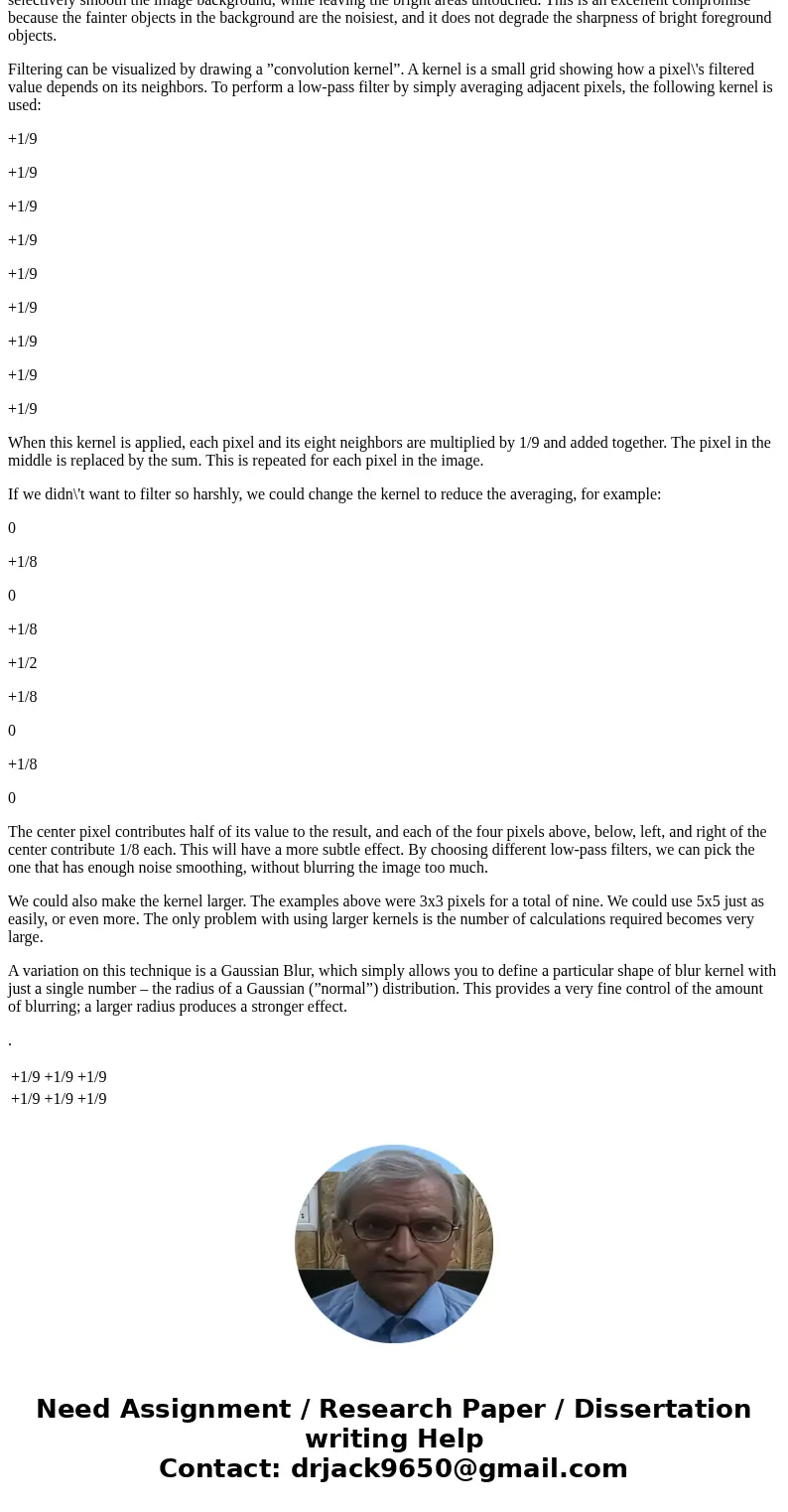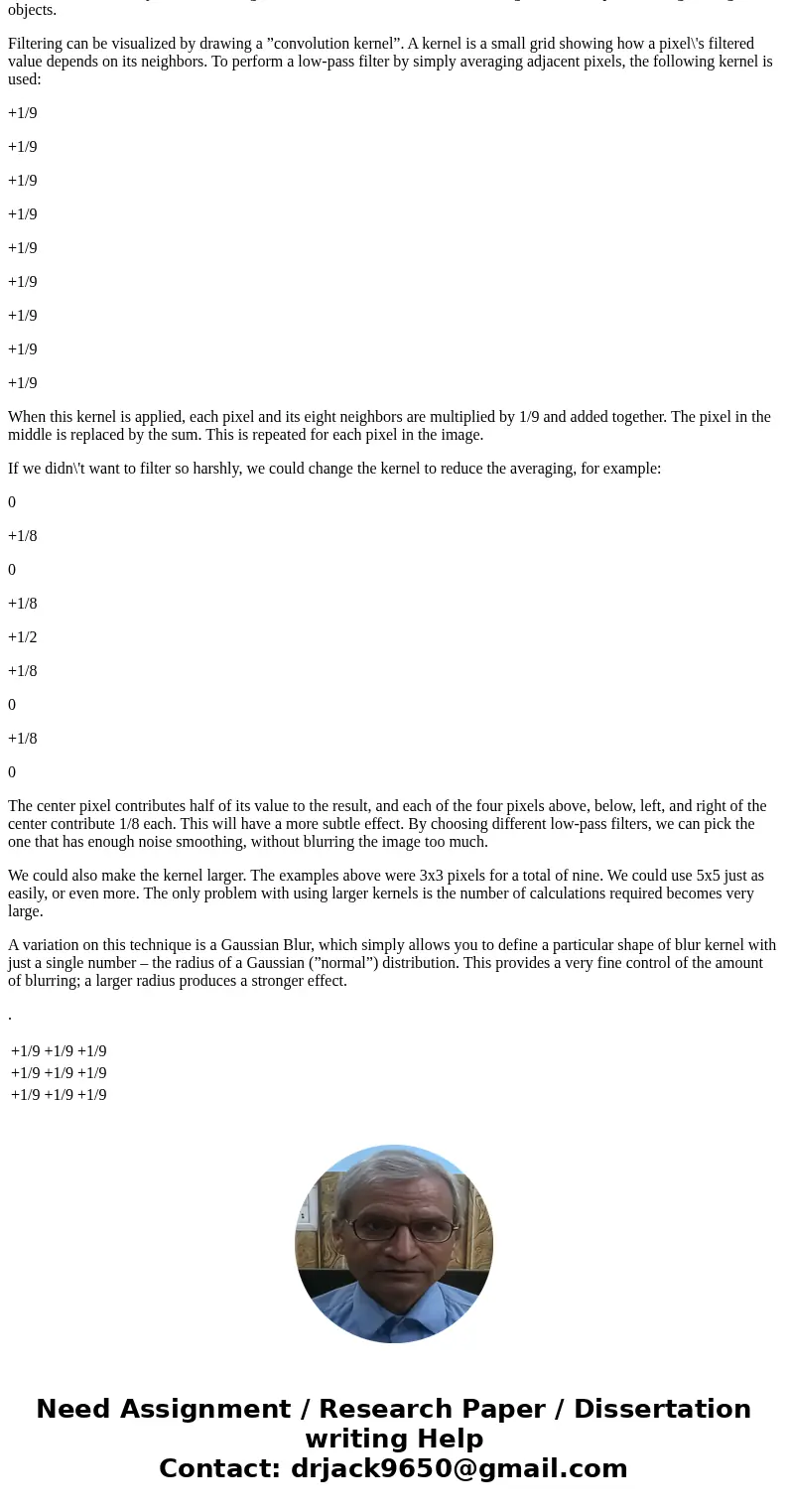Question 3 a Explain why the discrete histogram equalization
Question 3
a) Explain why the discrete histogram equalization technique does not, in general, yield a flat histogram
b) Discuss the limiting effect of repeatedly applying a 3 x 3 low pass spatial filter to a digital image. You may ignore border effects.
c) Two image, f (x.y) and g(x,y), have histograms hf and hg. Give the conditions under which you can determine the histogram of
f (x,y) + g (x,y)
f (x,y) - g (x,y)
f (x,y) × g (x,y)
f (x,y) ÷ g (x,y)
d) Show that the Fourier transform and its inverse are linear process
e) Given an image of size M x N, you are asked to perform an experiment that consists of repeatedly lowpass filtering the image using a Gaussian lowpass filter with a given cutoff Do. You may ignore computational round-off errors. Let kmin denote the smallest positive number representable in the machine in which the proposed experiment will be conducted
i) Let K denote the number of application of the filter. Can you predict, without doing the experiment what the result (image) will be for a sufficiently large value of K? If so, what is the result?
ii) Derive an expression for the minimum value of K that will guarantee the result that you predicted
f) The basic approach used to approximate a discrete derivative involves taking differences of the form f (x + 1,y) – f (x,y)
i) Obtain the filter transfer function, H (u,v), for performing the equivalent process in the frequency domain
ii) Show that H (u,v) is a highpass filter
Solution
That is an effect of discretization. Discrete histogram is an approximation of continuous probability density function and no new intensity levels are created in equalization process.
n fact, equalization is used to get a flat histogram independently of continuous or discrete distribution values,
Histogram equalization is a method in image processing of contrast adjustment using the image\'s histogram
Low-Pass Filtering (Blurring)
The most basic of filtering operations is called \"low-pass\". A low-pass filter, also called a \"blurring\" or \"smoothing\" filter, averages out rapid changes in intensity. The simplest low-pass filter just calculates the average of a pixel and all of its eight immediate neighbors. The result replaces the original value of the pixel. The process is repeated for every pixel in the image.
This low-pass filtered image looks a lot blurrier. But why would you want a blurrier image? Often images can be noisy – no matter how good the camera is, it always adds an amount of ”snow” into the image. The statistical nature of light itself also contributes noise into the image.
Noise always changes rapidly from pixel to pixel because each pixel generates its own independent noise. The image from the telescope isn\'t \"uncorrelated\" in this fashion because real images are spread over many pixels. So the low-pass filter affects the noise more than it does the image. By suppressing the noise, gradual changes can be seen that were invisible before. Therefore a low-pass filter can sometimes be used to bring out faint details that were smothered by noise.
MaxIm DL allows you to selectively apply a low-pass filter to a certain brightness range in the image. This allows you to selectively smooth the image background, while leaving the bright areas untouched. This is an excellent compromise because the fainter objects in the background are the noisiest, and it does not degrade the sharpness of bright foreground objects.
Filtering can be visualized by drawing a ”convolution kernel”. A kernel is a small grid showing how a pixel\'s filtered value depends on its neighbors. To perform a low-pass filter by simply averaging adjacent pixels, the following kernel is used:
+1/9
+1/9
+1/9
+1/9
+1/9
+1/9
+1/9
+1/9
+1/9
When this kernel is applied, each pixel and its eight neighbors are multiplied by 1/9 and added together. The pixel in the middle is replaced by the sum. This is repeated for each pixel in the image.
If we didn\'t want to filter so harshly, we could change the kernel to reduce the averaging, for example:
0
+1/8
0
+1/8
+1/2
+1/8
0
+1/8
0
The center pixel contributes half of its value to the result, and each of the four pixels above, below, left, and right of the center contribute 1/8 each. This will have a more subtle effect. By choosing different low-pass filters, we can pick the one that has enough noise smoothing, without blurring the image too much.
We could also make the kernel larger. The examples above were 3x3 pixels for a total of nine. We could use 5x5 just as easily, or even more. The only problem with using larger kernels is the number of calculations required becomes very large.
A variation on this technique is a Gaussian Blur, which simply allows you to define a particular shape of blur kernel with just a single number – the radius of a Gaussian (”normal”) distribution. This provides a very fine control of the amount of blurring; a larger radius produces a stronger effect.
.
| +1/9 | +1/9 | +1/9 |
| +1/9 | +1/9 | +1/9 |
| +1/9 | +1/9 | +1/9 |



 Homework Sourse
Homework Sourse